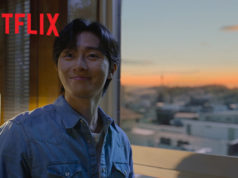ONE HOUR after Nurse Trinidad Gallardo welcomed residents of Barangay Calapacuan, a densely populated community in Subic, Zambales, to an outreach mission, she and her medical team found the first patient to be treated for drug-susceptible tuberculosis (DSTB). After three days of seeing over 900 people, mostly from the elderly and urban poor sectors, 18 persons were confirmed to have TB.
“Yan po talaga ang aming objective, makahanap ng mga pasyente sa community kasi hindi sila agad nagpapa-check up sa health center (That is our primary objective – to find patients in the community especially those who do not immediately seek care at health center),” Gallardo said.
To find more people with presumptive TB, the Municipality of Subic launched a fullscale, community outreach called “Tibay ng Dibdib para sa Bayan” (TIBAYAN) ahead of the March 24 World TB Day celebration. “This year, Subic aims to treat 540 patients. We believe that TIBAYAN will help us reach this target,” mused Gallardo.
Gallardo serves as chief nurse at the Subic Rural Health Unit (RHU). She handles various health services but spends most of her time finding, treating and caring for TB patients. Out of 138 cases tested for TB bacteria in 2018, 30 individuals came from Barangay Calapacuan, including those with drug-resistant TB (DRTB).
DRTB refers to a type of TB that requires a stronger and longer treatment regimen than the typical TB infection.
“Marami po pala sa Barangay Calapacuan, ang tawag na nga po namin dito ay TB factory (There were so many cases in Barangay Calapacuan that we nicknamed it a ‘TB factory.’),” quipped Gallardo.
Barangay captain Orlando Timbol, 56, agreed immediately to host the first-ever TIBAYAN in Subic. “Personal advocacy ko po ito kasi namatay sa TB ang tatay ko (I consider this as my personal advocacy. My father died of TB),” shared Timbol.
Timbol’s father was diagnosed with TB first in 1999, had a relapse in 2011, and died in 2015. “Malungkot na dahil sa maling kaalaman sa TB, iniwasan siya ng mga anak niya (It was sad that even his children avoided him because of wrong knowledge of TB),” said Timbol. Timbol learned about how TB transmission is air-born after attending health workshops given by the local health office and non-government organizations.
“Akala kasi nang marami nakakahawa ang TB pag nagamit mo yung kubyertos ng isang may TB. Hindi pala ito totoo (Many people mistake that TB is transmitted when sharing utensils used by a person with TB. This is not true),” stressed Timbol, adding that health education is important to save lives.
Barangay health worker Mary Joy San Miguel, 23, was assigned to educate participants about TB during the three-day Active Case Finding (ACF) initiative. ACF refers to a strategy to look for presumptive TB cases in settings where at-risk groups of the elderly, urban poor and male smokers congregate.
“Sa simula po, nakakahiya pero nang makita ko pong may natutunan sila habang naglalaro kami, lumakas din po ang loob ko (In the beginning, I was shy but when I saw that they were learning while having fun, I got more confident),” shared 24-year old San Miguel, the youngest community worker in the team. She said that she feels proud for having done her share.
The local health education campaign is called “Tibay ng Dibdib” to focus on resilience, a trait common to most patients cured of TB. Craftsman Fernando Igmao, 47, was successfully treated of DRTB in 2018 after two years of continuous medication. He used to work for an aluminum fabricating store when he started presenting symptoms of TB in 2015. He was unable to complete his first round of treatment regimen. When he experienced sudden weight loss and frequent bouts of fever, he decided to finally seek treatment at the Subic RHU.
“Tibay at lakas ng loob ang inasahan ko para matagumpayan ko ang TB (Resilience and steadfastness were key to my successful TB treatment),” Igmao said. Today, Igmao has returned to his work as a fabricator, putting up his own workshop at his residence.
“Sana marami kaming makita at magamot sa aming barangay para mapigil ang hawaan ng TB (We hope to find and treat as many TB patients as possible to prevent the spread of TB in our barangay),” said San Miguel.
Fisherman Romeo Gomes (not his real name), 48, prays that TB stops with him. He is one of the 18 detected to have TB during the TIBAYAN event. He went to TIBAYAN to get his free chest X-ray.
“Nagpunta na po ako sa center at sabi nila, pumunta po ako sa barangay hall para sa chest X-ray (I have visited the health center and was advised to go to the barangay hall for a chest X-ray),” said Gomes. At the TIBAYAN event, he was confirmed to have DSTB and was immediately started on treatment.
Gomes, however, admitted to be struggling with the use of a protective mask at home but confirmed that he had become more conscious about cough manners. “Lagi na akong may alampay na tuwalya o panyo pantakip sa ubo (I always have with me a handkerchief or small towel to cover my cough),” shared Gomes.
Dr. Cesar Cassion, regional director of the Center for Health Development (CHD) in Central Luzon, said that simple practices like covering cough count a lot. “Lagi nating tandaan na ang ating kalusugan ay ating kayamanan (Always remember that our health is our wealth),” said Dr. Cassion, recognizing the potential of TIBAYAN to improve the access of Filipinos to critical health services and information.
The Philippines is one of 30 countries with the highest burden of TB. In 2017, 581,000 Filipinos were estimated to have TB. The World Health Organization (WHO) reports that about 36% of these remain missing or undetected.
Designed with the help of the TB Platforms, a project funded by the United States Agency for International Development (USAID) and implemented by the University Research Company (URC), TIBAYAN serves as a model for a full-scale, focused campaign against TB (FFCAT) in communities. Dr. Rhodora Cruz, area manager of TB Platforms in Central Luzon, hopes to bring this model in other provinces like Nueva Ecija and Pampanga to find missing TB cases.
“We will gather evidence that TIBAYAN is an effective and efficient way to find, treat and cure TB patients — one person, one community, one hour, one day at a time,” said Dr. Cruz.




